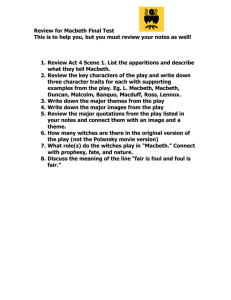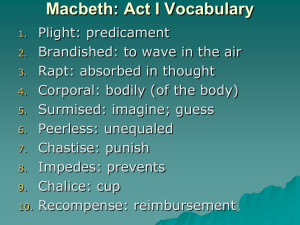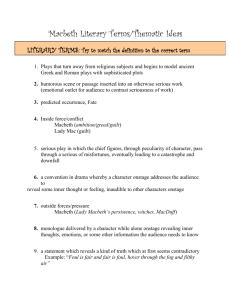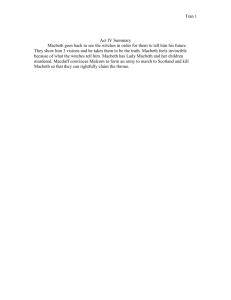Macbeth Literary Elements
advertisement
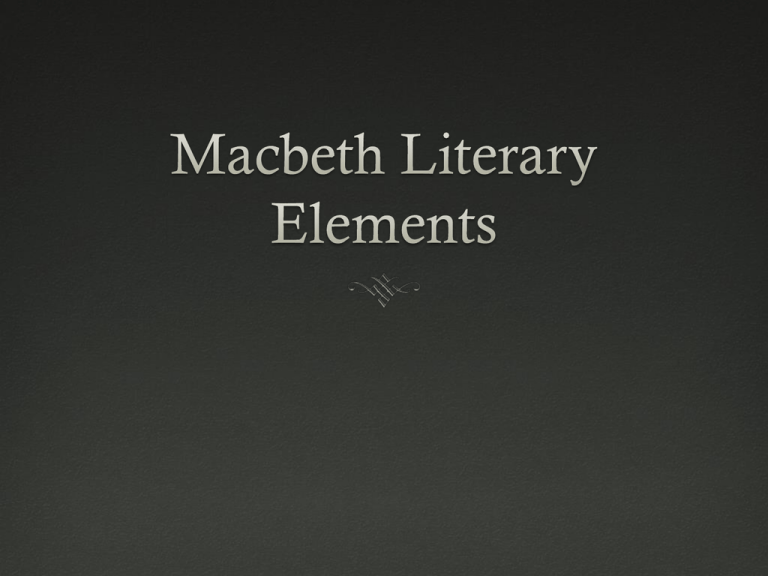
Symbol Anything that represents or stands for something else Example: “Out, damned spot!” Lady Macbeth cries in her sleep. The blood spots she dreamed she saw on her hands were symbols of the guilt she now feels after helping kill Duncan. Example: “Fruitless crown” is a symbol of Macbeth’s infertility; his children (which he will not have, of course) would not have been kings. Personification Giving human characteristics to something that isn’t human, or to an abstract idea Example: If chance will have me King, why, chance may crown me without my stir. Example: Come, seeling Night, scarf up the tender eye of pitiful Day… Theme Main ideas of the story—a “living idea” that emerges from the plot Example: Good vs. evil Example: The effects of ambition on people Example: Inverted values (“fair is foul and foul is fair”) Foil A secondary character whose personal traits and characteristics are essentially opposite from a main character. Foils are used to highlight character differences. Example: Banquo is Macbeth’s foil. Banquo, who is more noble than Macbeth, would have treated the witches’ prophecy much different from Macbeth, if their roles were reversed. Apostrophe Addressing an inanimate object, or something that is dead or otherwise not present. Example: “Is this a dagger which I see before me, / The handle toward my hand? Come, let me clutch thee!” Metaphor Metaphor: A comparison that does not use like or as Example: Look like the innocent flower but be the serpent underneath it. Example: “O full or scorpions is my mind, dear wife” Example: “I have begun to plant thee, and will labor to make thee full of growing.” Simile A comparison using like or as Example: “Your face, my thane, is as a book where men / May read strange matters.” Example: “And pity, like a naked newborn babe.”

